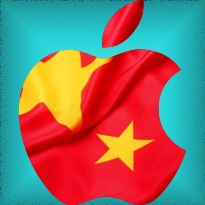 Online gambling operator Bwin has updated its real-money online poker app to include support for the iPad. The app features the same mobile interface as Bwin’s iPhone and Android Texas Hold’em apps, but this latest version takes full advantage of the new iPad 3’s 1024 x 768 resolution.
Online gambling operator Bwin has updated its real-money online poker app to include support for the iPad. The app features the same mobile interface as Bwin’s iPhone and Android Texas Hold’em apps, but this latest version takes full advantage of the new iPad 3’s 1024 x 768 resolution.
According to research firm IDC, Apple is the app designers’ platform of choice. Despite flourishing sales of devices powered by Google’s Android OS, more developers said they were “very interested” in developing apps for devices running Apple’s iOS, with the iPhone topping the chart at 89% and the iPad right behind at 88%. Android phones were well back at 79% and Android tablets back further still at 66%. Blame for Android’s decreasing popularity among designers goes to the increased fragmentation of the platform, as the multiple manufacturers who utilize Android adapt it in different ways to fit their hardware. Windows phone and tablets both scored 37%, while Research In Motion’s (RIM) BlackBerry phones scored 16% and the much-derided Playbook a mere 11%.
How tough are things at RIM nowadays? The iPhone has toppled the BlackBerry from the top of the smartphone rankings in RIM’s home market, Canada. RIM shipped 2m BlackBerries in Canada in 2011, compared to 2.85m Apple units. Could be why RIM posted a job listing on LinkedIn this week for a ‘Senior iOS Mobile Developer’ who can “create exciting enterprise applications for distribution on the iOS platform.” Seems RIM has decided that if you can’t beat ‘em, join ‘em, and pray to God it provides a healthy new revenue stream.
But don’t count RIM out just yet. The company plans to hand out 2,000 prototypes of the new BlackBerry 10 device to developers this May at the BlackBerry Jam conference in Orlando, Florida. RIM VP Alec Saunders told Bloomberg that the intent was not only to entice developers to create apps for the platform, but to provide “tangible evidence of the company making progress to finally shipping the device.” (Like Monty Python’s machine that goes ‘BING’, this proves that RIM’s baby is still alive.) The devices are expected to go on sale to the public in the “latter” part of 2012, but whether it will be enough to arrest RIM’s decline is an open question.
Making matters worse for RIM, the new iPhone will feature a sharper and larger 4.6-inch “retina” display (the same type in the new iPad 3, only smaller) when it makes its market debut sometime in the second quarter of 2012. South Korea’s Maeil Business Newspaper quoted an unnamed source that claims Apple has already begun placing orders with suppliers.
We’ll end this mobile marathon with some truly gobsmacking numbers coming from (where else) Asia. The number crunchers at Flurry claim that China has leapt from tenth to second place in the app sessions chart (measured in length of time per launch and use of an app) over the past year, putting it behind only the United States. Even more impressive, in Jan. 2011 the US accounted for 28% of the world’s iOS and Android device new activations, while China’s share was just 8%. By Feb. 2012, China’s figure had risen to 23%, while the US had fallen to 22%. The more mature US market still has more than twice as many active smart devices as China, but the Chinese market has more upside, based on the size of the population and the percentage who can afford smartphones v. the current installed base. Basically, it’s an Asian world, and the rest of us had better get used to living in it. That reminds me, where did I put that Mandarin language instructional CD…